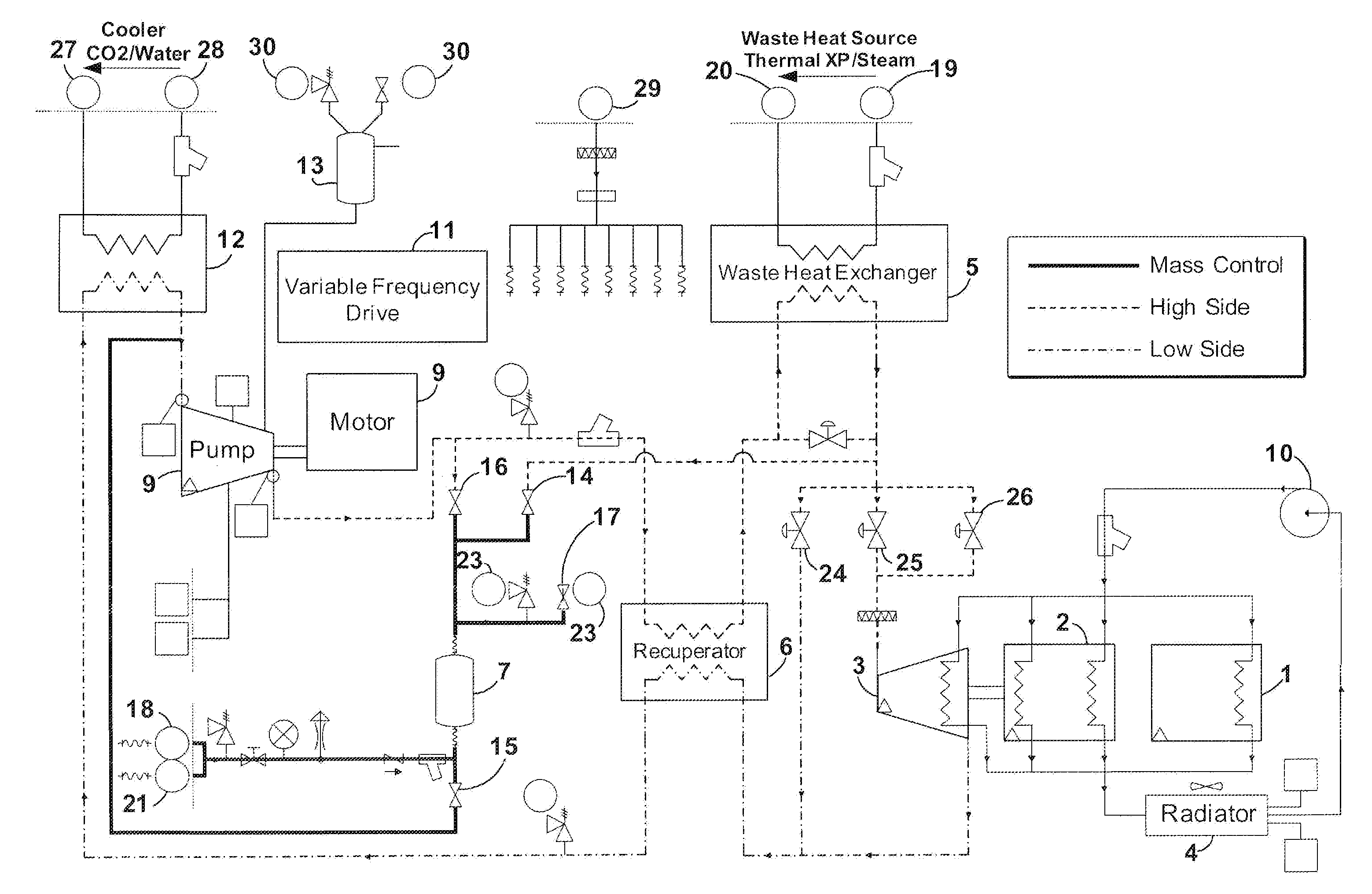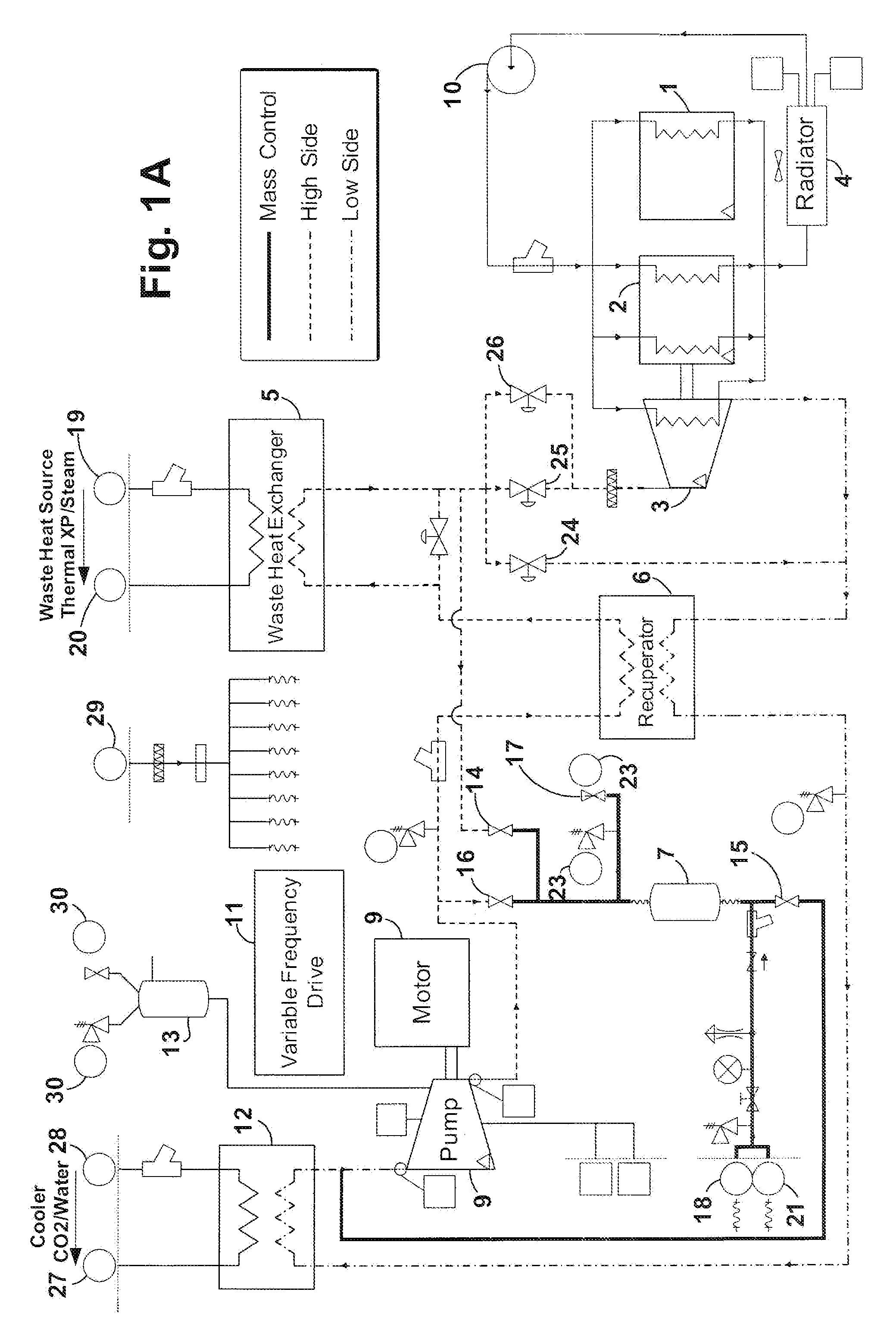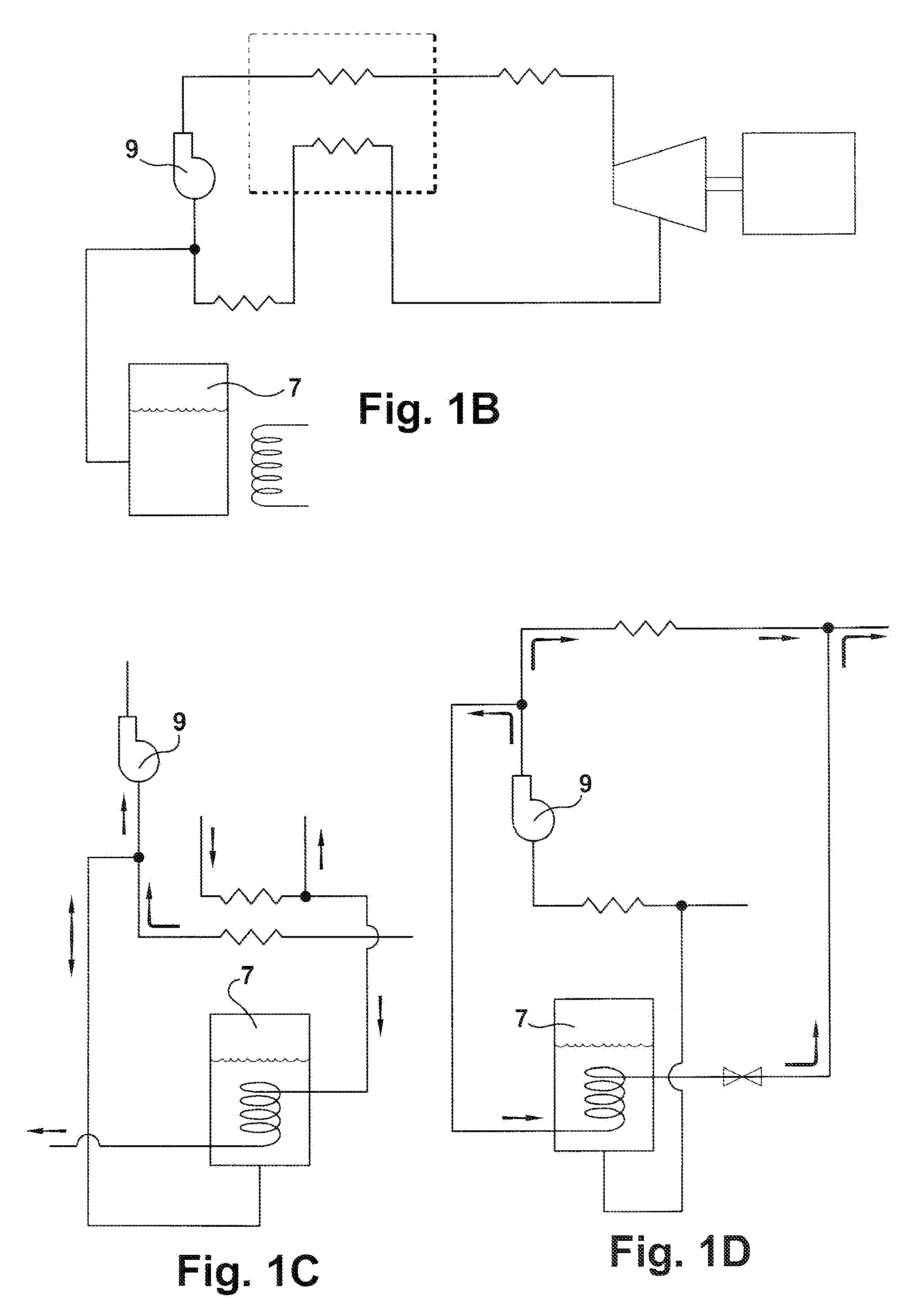Heat engine and heat to electricity systems and methods with working fluid fill system
a technology of working fluid and heat source, applied in the field of thermodynamics and energy conversion systems and methods, can solve the problems of complex boiling water at multiple pressures/temperatures to capture heat at multiple temperature levels as heat source stream, and it is not always practical to use steam-based rankine cycles, etc., to achieve efficient and effective power generation
- Summary
- Abstract
- Description
- Claims
- Application Information
AI Technical Summary
Benefits of technology
Problems solved by technology
Method used
Image
Examples
Embodiment Construction
[0027]The inventive heat engine 100 (also referred to herein in the alternative as a “thermal engine”, “power generation device”, “waste heat recovery system” and “heat recovery system”, “heat to electricity system”) of the present disclosure utilizes a thermodynamic cycle which has elements of the Rankine thermodynamic cycle in combination with selected working fluid(s), such as carbon dioxide, to produce power from a wide range of thermal sources. By “thermal engine” or “heat engine” what is generally referred to is the equipment set that executes the thermodynamic cycle described herein; by “heat recovery system” what is generally referred to is the thermal engine in cooperation with other equipment to deliver heat (from any source) to and remove heat from the inventive thermal engine.
[0028]The thermodynamic cycle executed by the heat engine 100 is described with reference to a pressure-enthalpy diagram for a selected working fluid, FIG. 2. The thermodynamic cycle is designed to ...
PUM
 Login to View More
Login to View More Abstract
Description
Claims
Application Information
 Login to View More
Login to View More - R&D
- Intellectual Property
- Life Sciences
- Materials
- Tech Scout
- Unparalleled Data Quality
- Higher Quality Content
- 60% Fewer Hallucinations
Browse by: Latest US Patents, China's latest patents, Technical Efficacy Thesaurus, Application Domain, Technology Topic, Popular Technical Reports.
© 2025 PatSnap. All rights reserved.Legal|Privacy policy|Modern Slavery Act Transparency Statement|Sitemap|About US| Contact US: help@patsnap.com



